Architect, assess, and monitor information as an enterprise asset
HOPEX Information Architecture
One of the modules of the HOPEX EA product family, HOPEX Information Architecture is the most optimal product that allows you to manage your knowledge and know how as the assets of your organization
Our product ensures that Information Technologies (IT) managers and business architects can access the deep information they need in order to make collaborative and rational decisions about the use of information between the different functions of the organization.
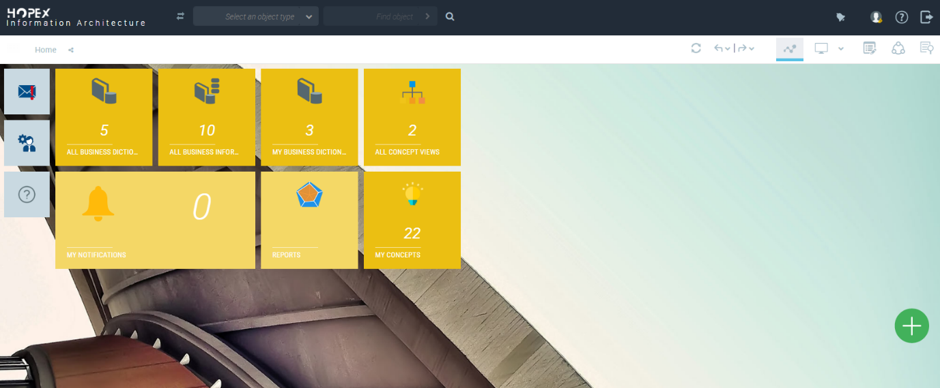
HOPEX Information Architecture offers the opportunity to model and update your information architecture by creating meaningful models about your organization’s business organizations, relationship and life cycles, creating terminology-based data dictionaries, and creating business collabration models.
HOPEX Information Architecture works integrated with Hopex platform. In other words, it enables you to improve your business goals and IT transformation by showing the key information about your organization in the clearest way.
Key Challenges

Data Integrity
- Data users don’t have a clear understanding of where the data come from, and whether it can be trusted or if it is accurate.
- The amount of data has skyrocketed and come from heterogeneous sources.

Data Usability
- Data may not be structured, labeled or properly documented so that business users can’t easily search it and use it.
- Business users often don’t share a common understanding of the meaning of data.
- They don’t know who owns the data and who they can refer to for information.

Regulatory Compliance
- Data regulations such as GDPR and Solvency II require a sophisticated level of monitoring and policing of data
HOPEX Information Architecture Benefits
Get visibility into your data
- Build and leverage a data dictionary and a business glossary to improve business efficiency and ensure everybody shares a common understanding
Ensure data integrity
- Ensure data integrity by understanding how data is used and transformed thanks to a clear data lineage
Ensure data compliance
- Define rules, link them to business processes and make sure your data comply to internal policies and regulations
HOPEX Information Architecture Home Page
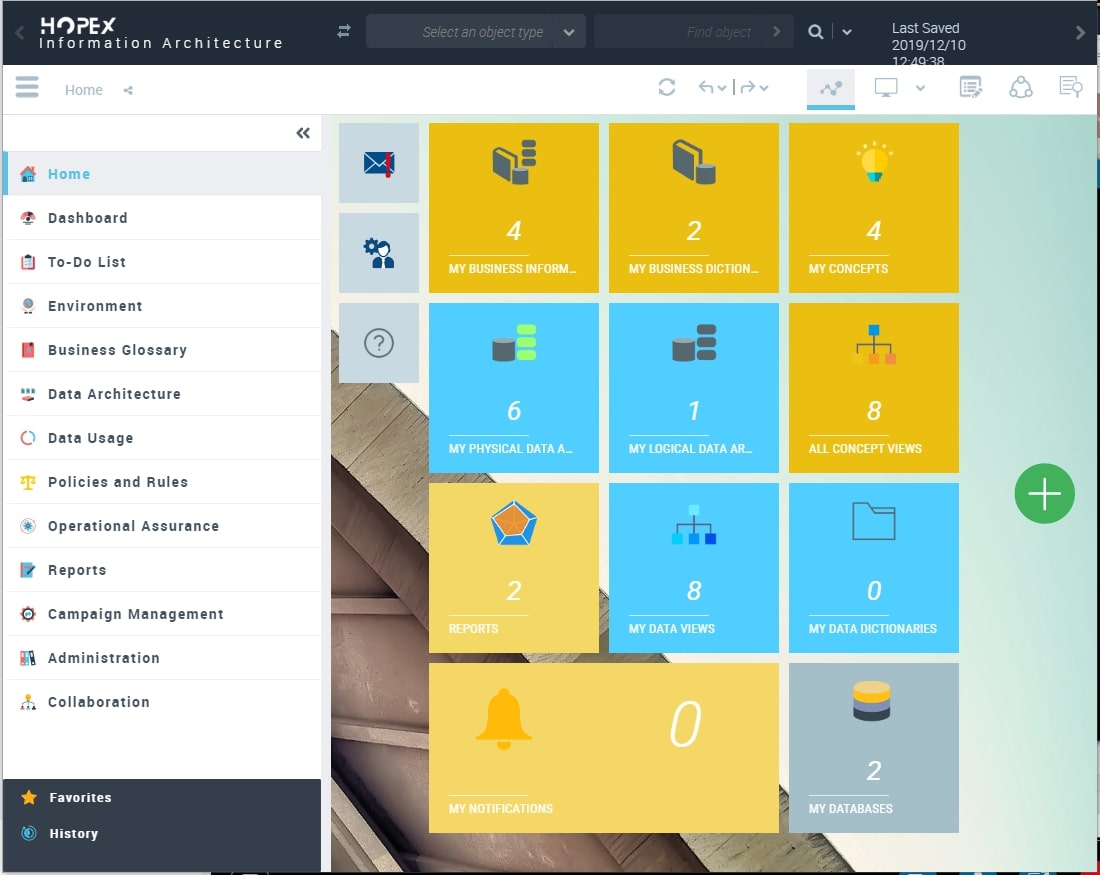
Tiles provide shortcuts to frequently used features and are customizable by end-users
Key Features
Architect data
- Automatically generate a data dictionary
- Build a business glossary of enterprise terms
- Design physical, logical and conceptual data models
- Automatically connect technical data to business data
Trace data
- Map data lineage and describe the transformations that happen to the data
- Link data to applications and processes to understand data usage
- Assess data quality through the six dimensions of data quality
- Categorize data based on its sensitivity
Govern data
- Assign data governance roles
- Define collaborative workflows
- Describe rules required by regulatory bodies
- Reference regulations including BCBS 239 and Solvency II to ensure compliance
- Tie rules to business processes to ensure their enforcement
Three Layers of Data Modelling
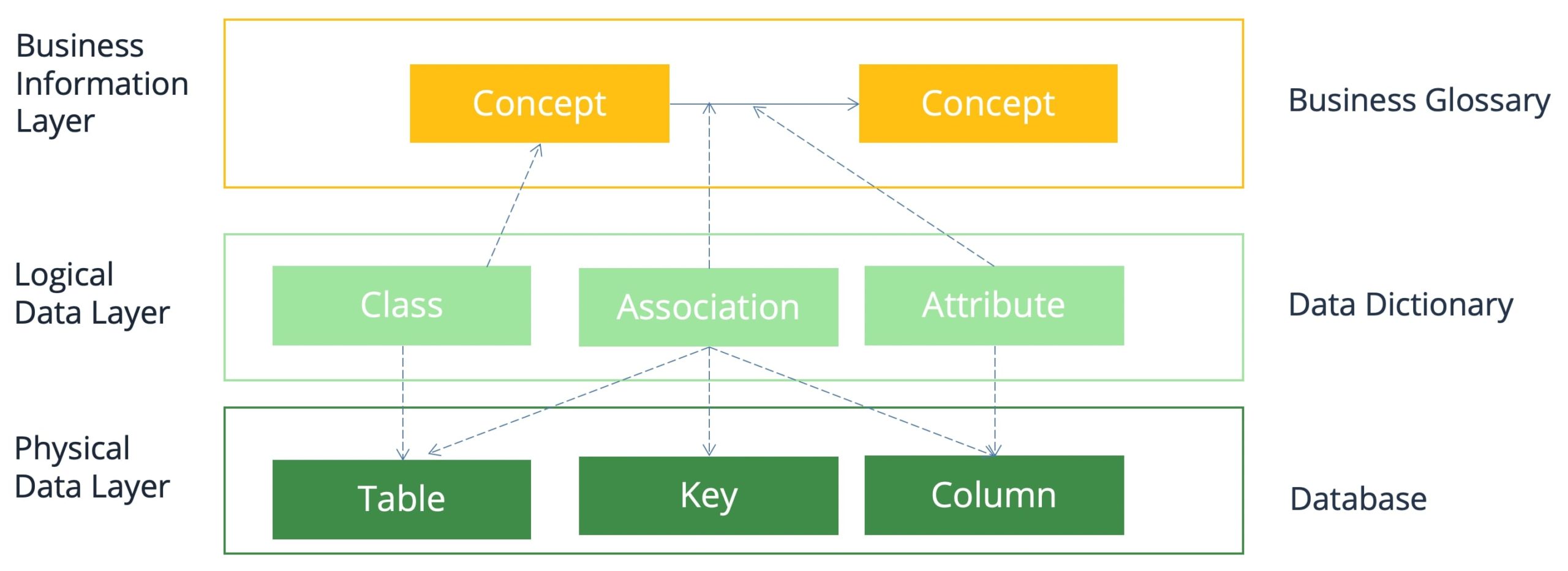
Initialize Data Dictionary
Generate a data dictionary by extracting information from data source via ODBC
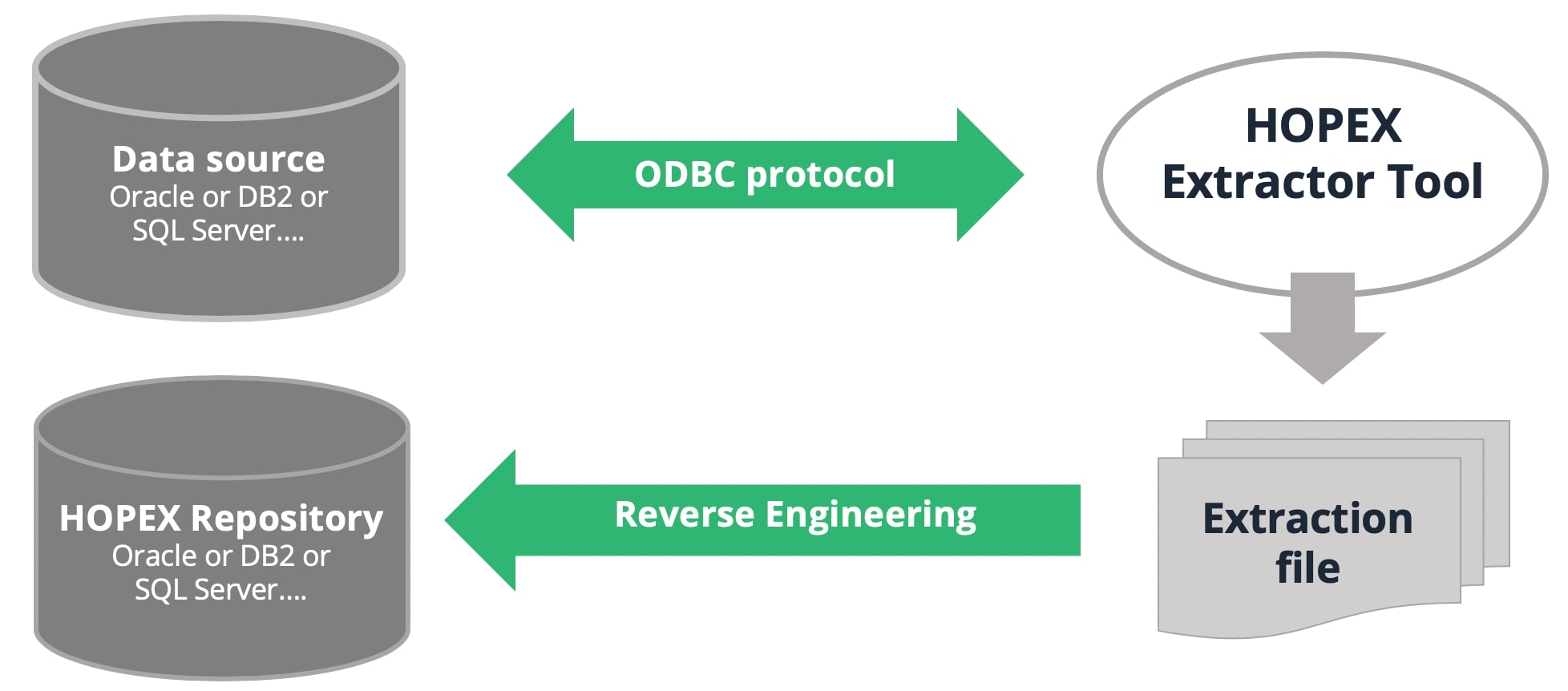
Reverse engineer aracı veritabanlarını sorunsuz bir şekilde reverse edebilmek için veriler doğrudan ODBC üzerinden alır.
Create SQL Code
Create SQL code based on physical items of the HOPEX repository (database, table, column) to a target DBMS format.
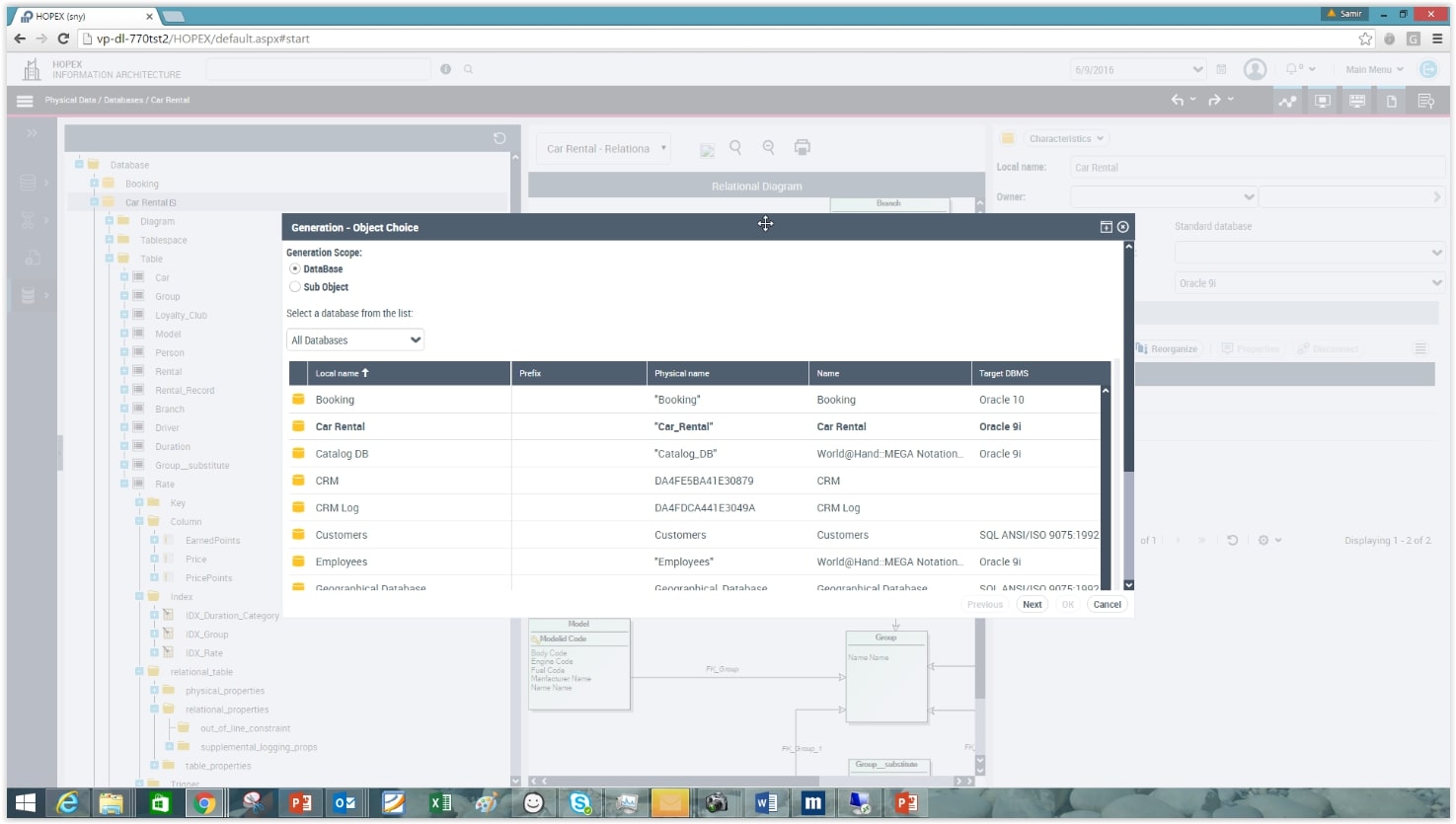
Database parameters can be customized either at a global level, or at a detailed level on a column or primary key, depending on the target DBMS.
Data Lineage
Describe the transformations that happen to the data. Data lineage diagrams include:
- Applications, as well as technologies for external systems.
- Data origin, processing type, control measurement and subject.
- Different types of flows: standard and data flows (used when some new Data appear)
- Definition of where applications are used and by who.
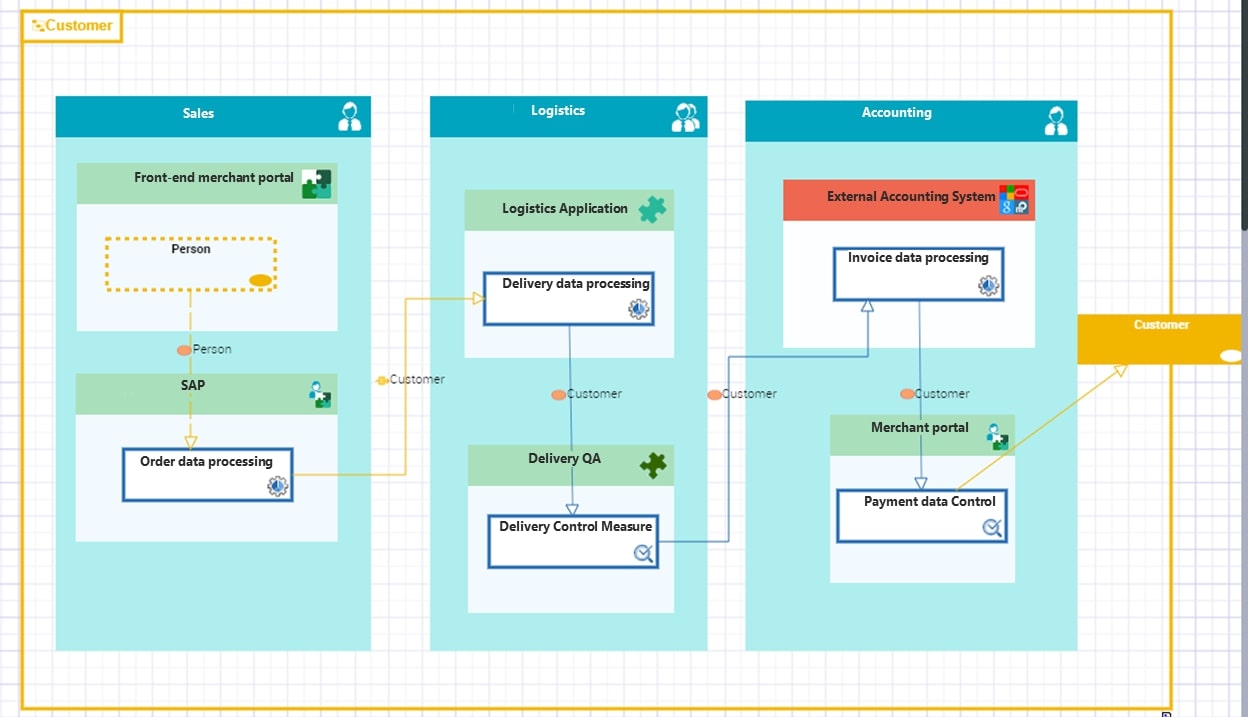
Map data lineage to understand how data is transformed
Data Lineage Initialization
Based on the data flows existing in the repository, data lineage diagrams can be automatically initialized from a graph report
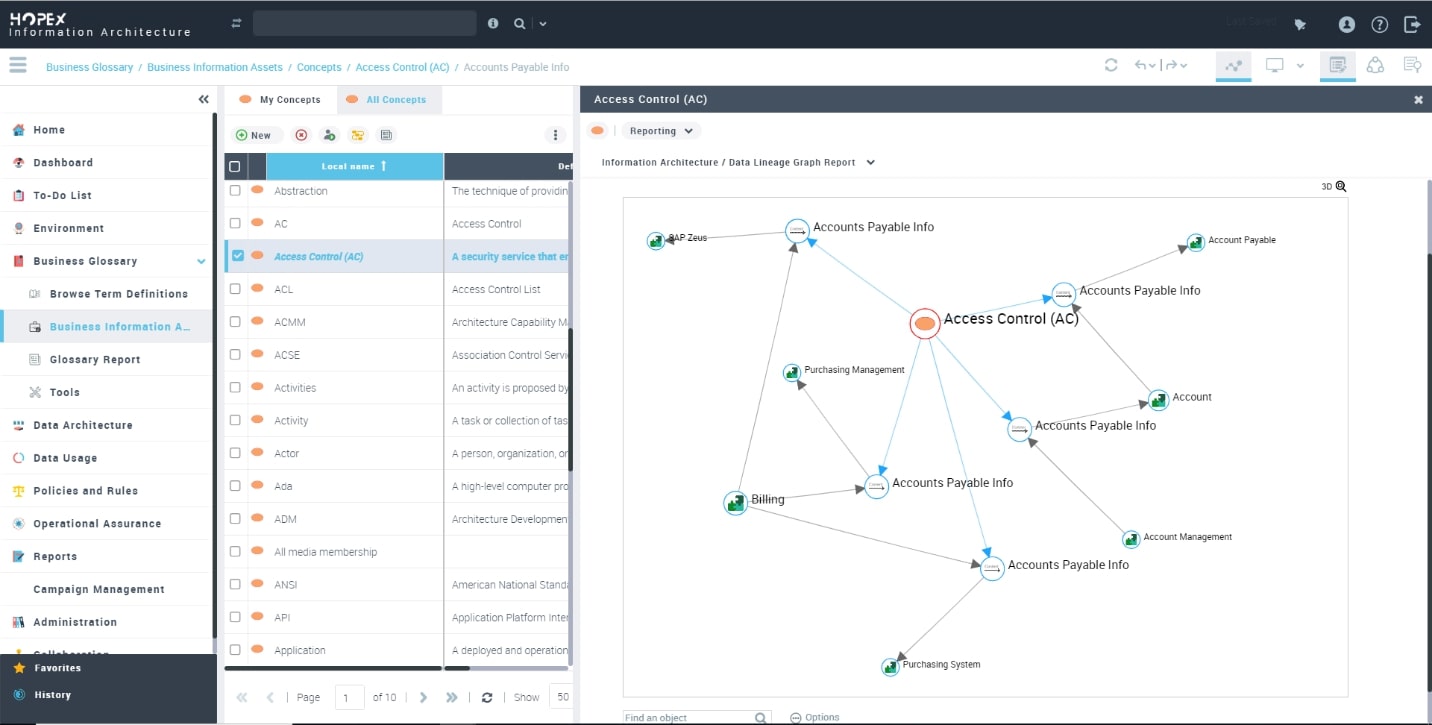
Graph report for the data usage of a business concept
Lineage between business and technical data
Understand how a business concept and a technical data are tied each other
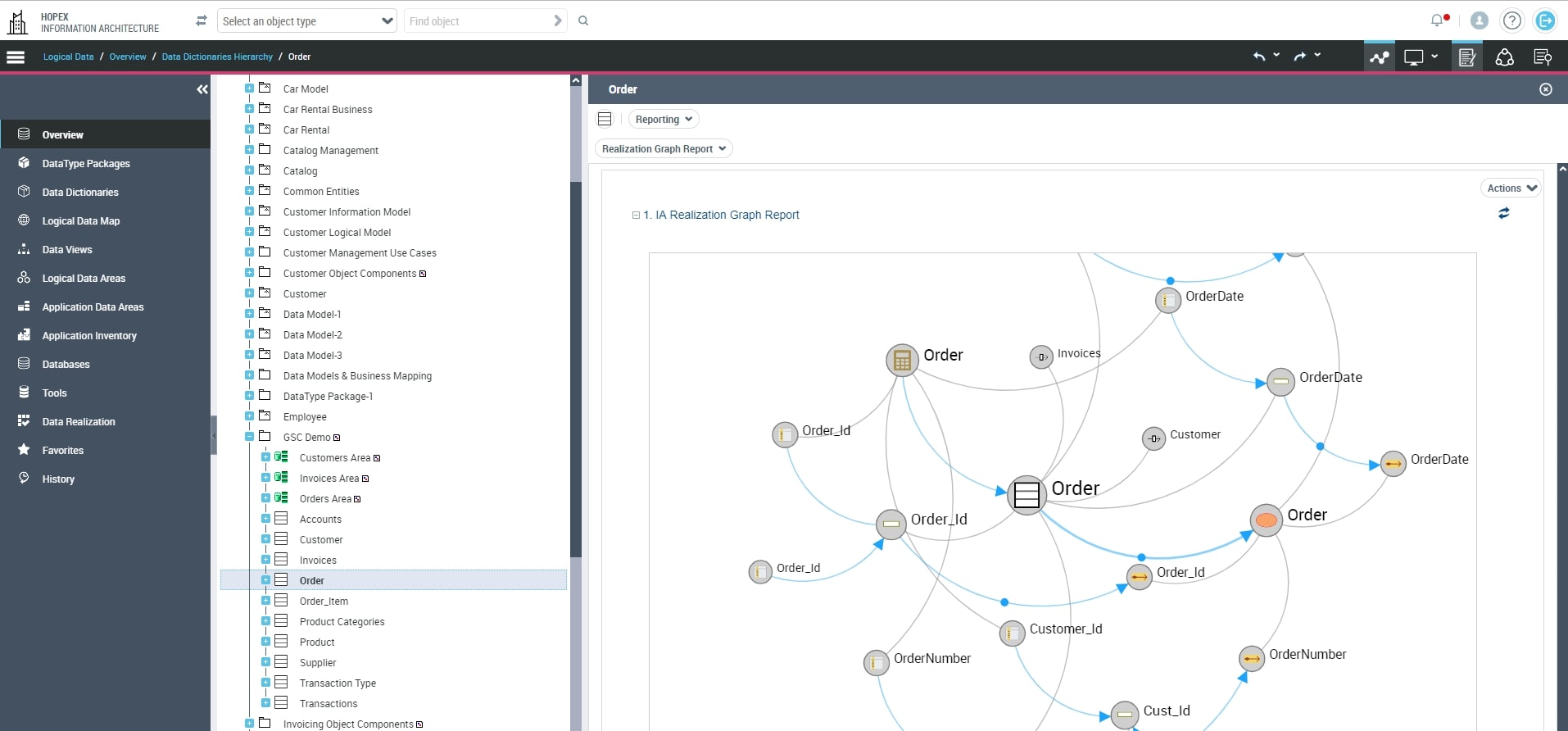
Enables users to view links between business glossary and data dictionary
Data Usage in Applications
- View how applications use the data of a data dictionary
- Connect applications and data through data stores.
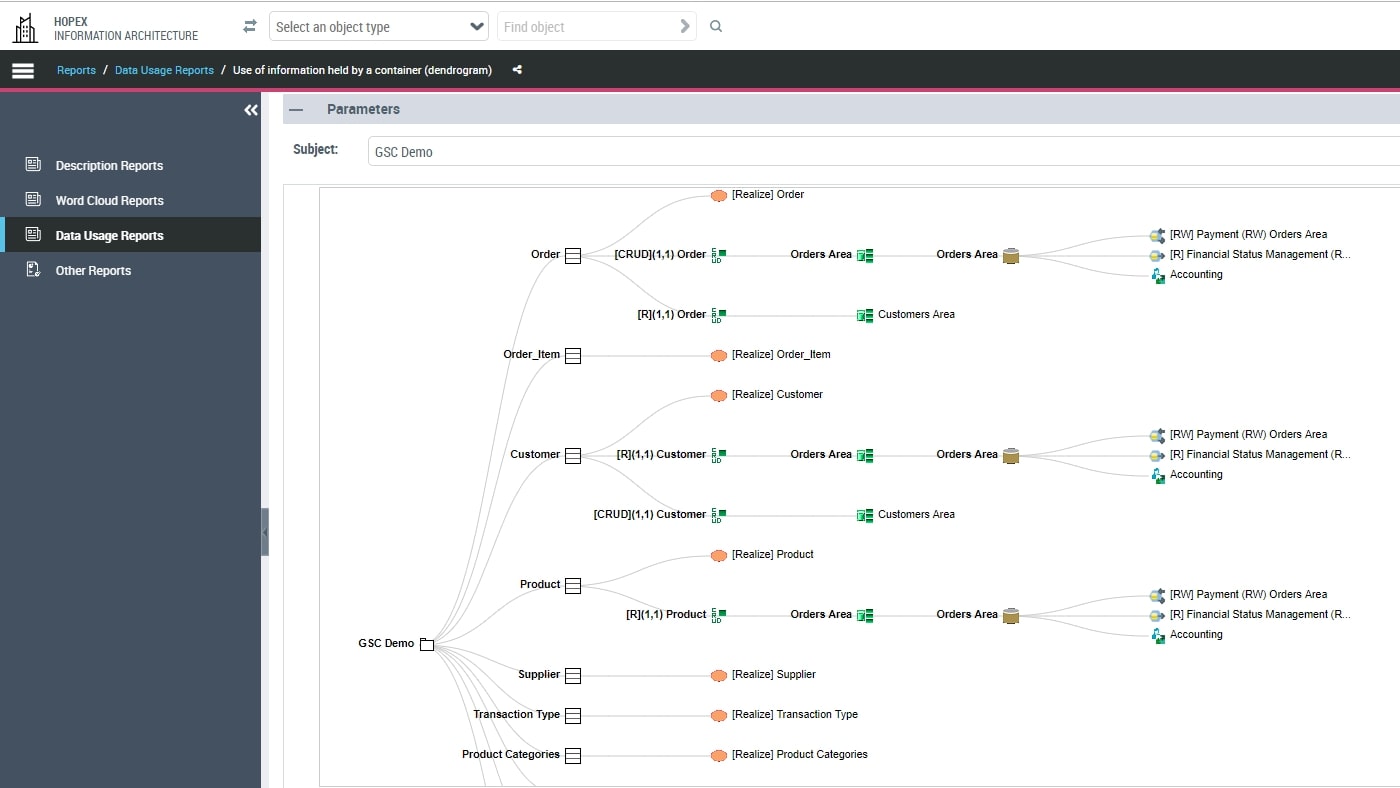
Quickly understand the impacts of change in a data dictionary
Provides traceability from business glossary, data dictionary and data usage in applications
Business Process Analysis Integration
Link data and processes through flows or data stores

The concept “Travel Package” is used in “Account Management”, “Track orders on internet” and “Research” processes
Understand where data is used in processes to improve compliance to regulations.
Understand the business criticality of a data
Assess Data Quality
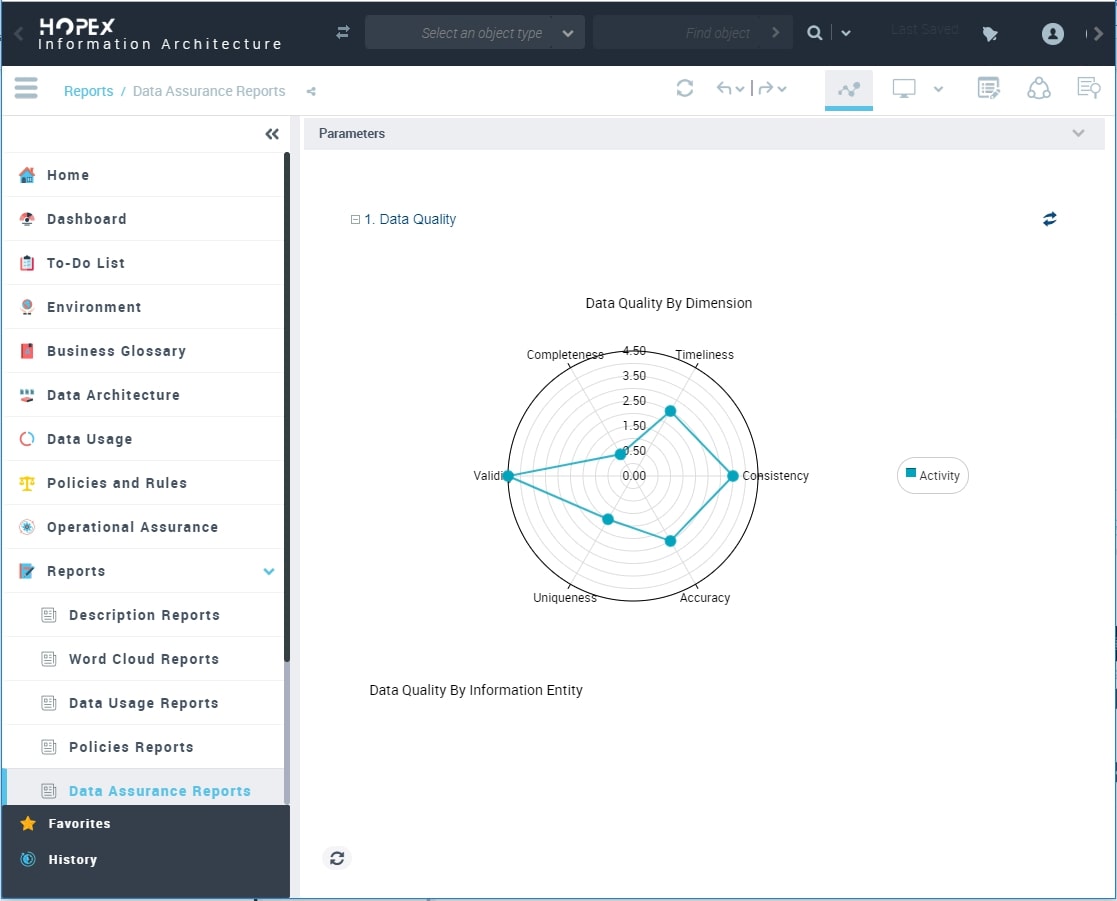
- Assess data quality under the six dimensions of data quality including Completeness, Uniqueness, Timeliness, Consistency, Validation and Accuracy.
- Campaigns can be set up to assess data quality by various stakeholders in the organization
Get a clear understanding of the data quality in your organization
Proceed to remediation plans to improve data quality
Categorize Data
- Categorize data based on its sensitivity. Define retention period for each data.
- This feature is common to HOPEX Privacy Management and HOPEX Information Architecture
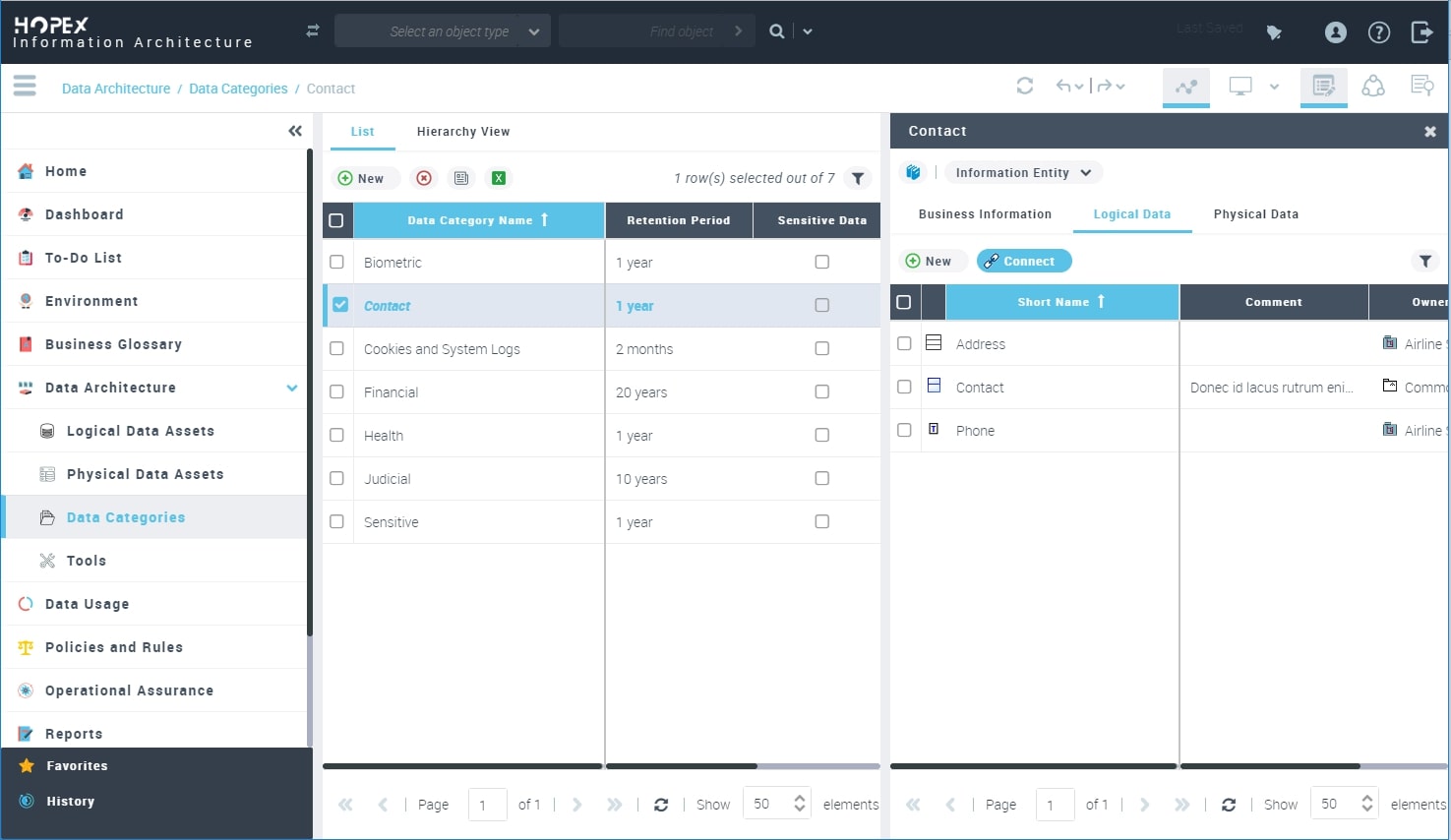
Helps comply with Privacy Management regulations such as GDPR and CCPA
Workflows
- Set up automated workflows between contributors to validate data models and quickly build a repository of data models
- Workflows are instantiated by data designers or data owners. All the other data contributors can sign off on the validation steps.
- Default workflows are for: data lineage, business, logical and Physical data models
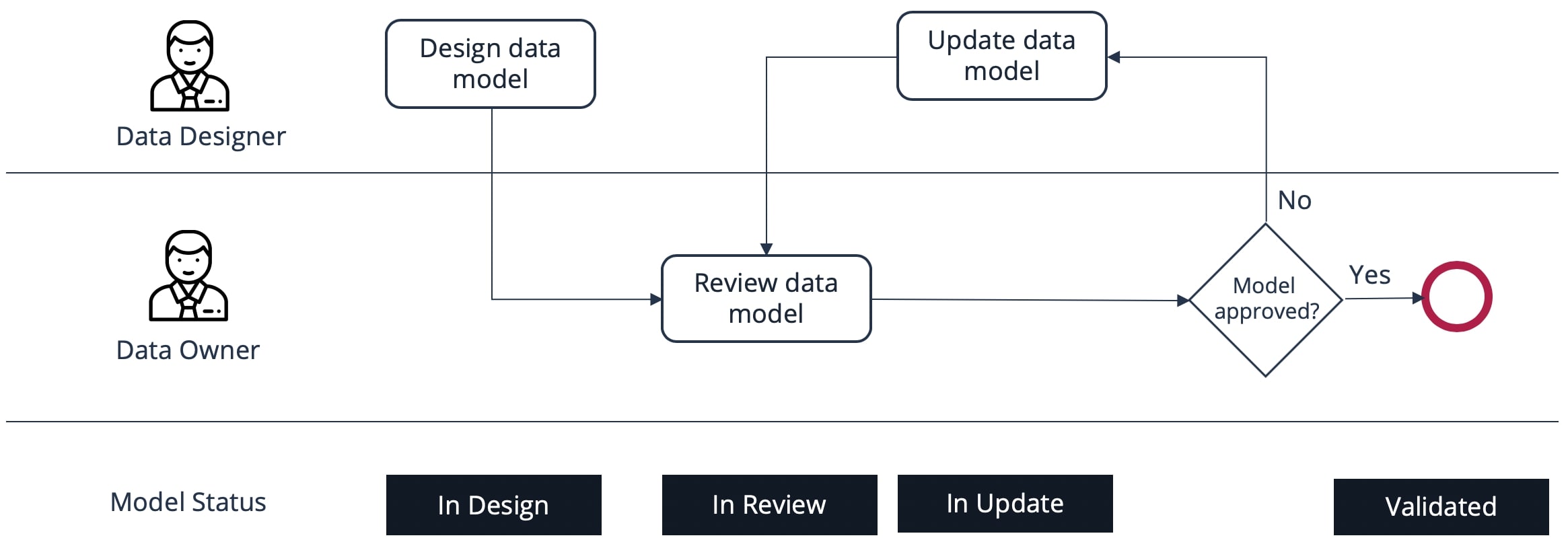
Example of workflow for the validation of data models
Manage Data Policies
- Describe business directives and policies.
- Some standard regulatory requirements are provided out-of-the-box such as BCBS 239 and Solvency II.
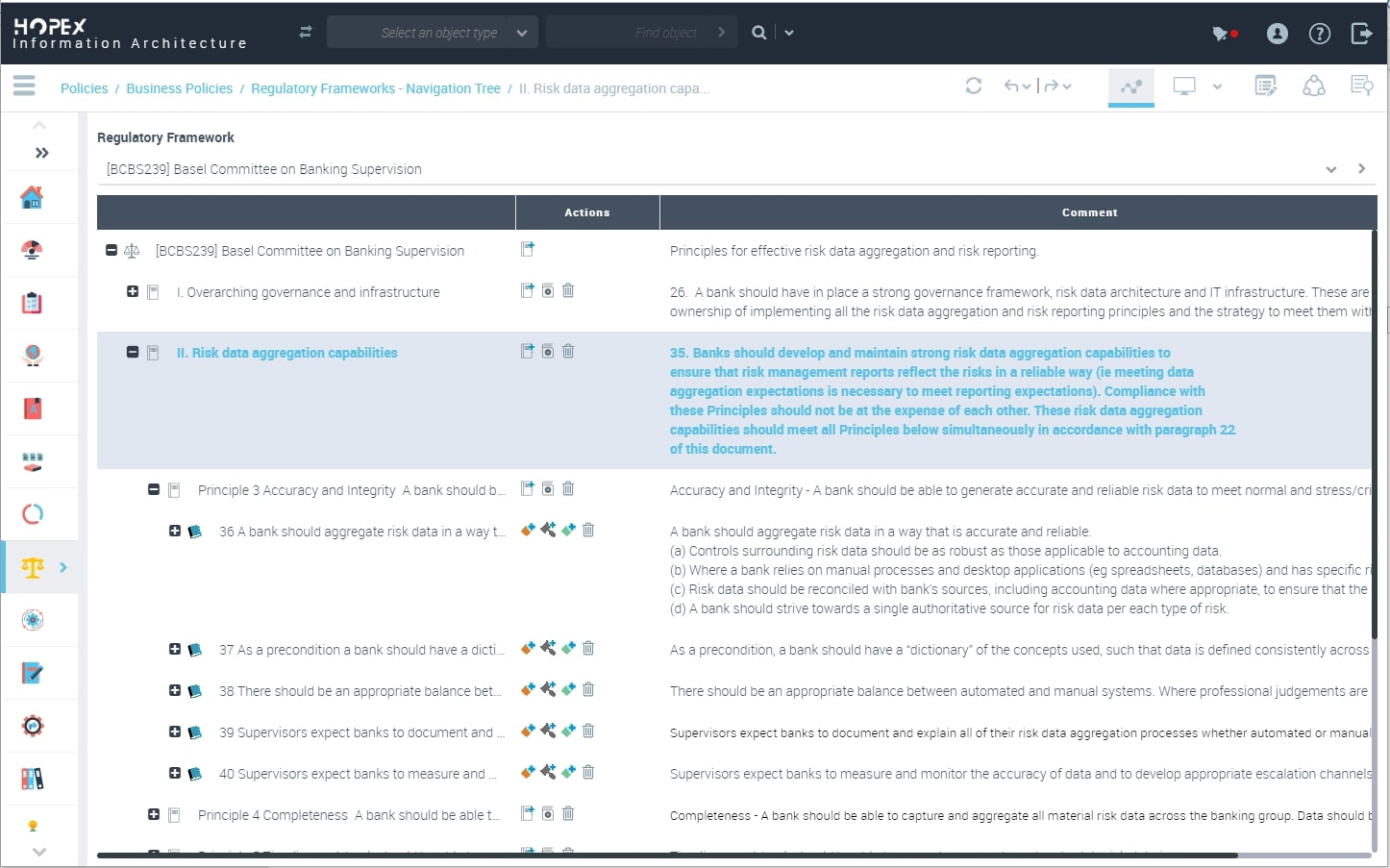
BCBS239 regulatory requirements
Monitor Customizable Dashboards
- Monitor the level of data assets that are constrained by the articles and sections of regulations such as BCBS 239 or Solvency II
- Monitor the level of completion of the repository, e.g. the percentage of terms with a definition
- Monitor the progress of validation workflows for Data Lineage maps and data models
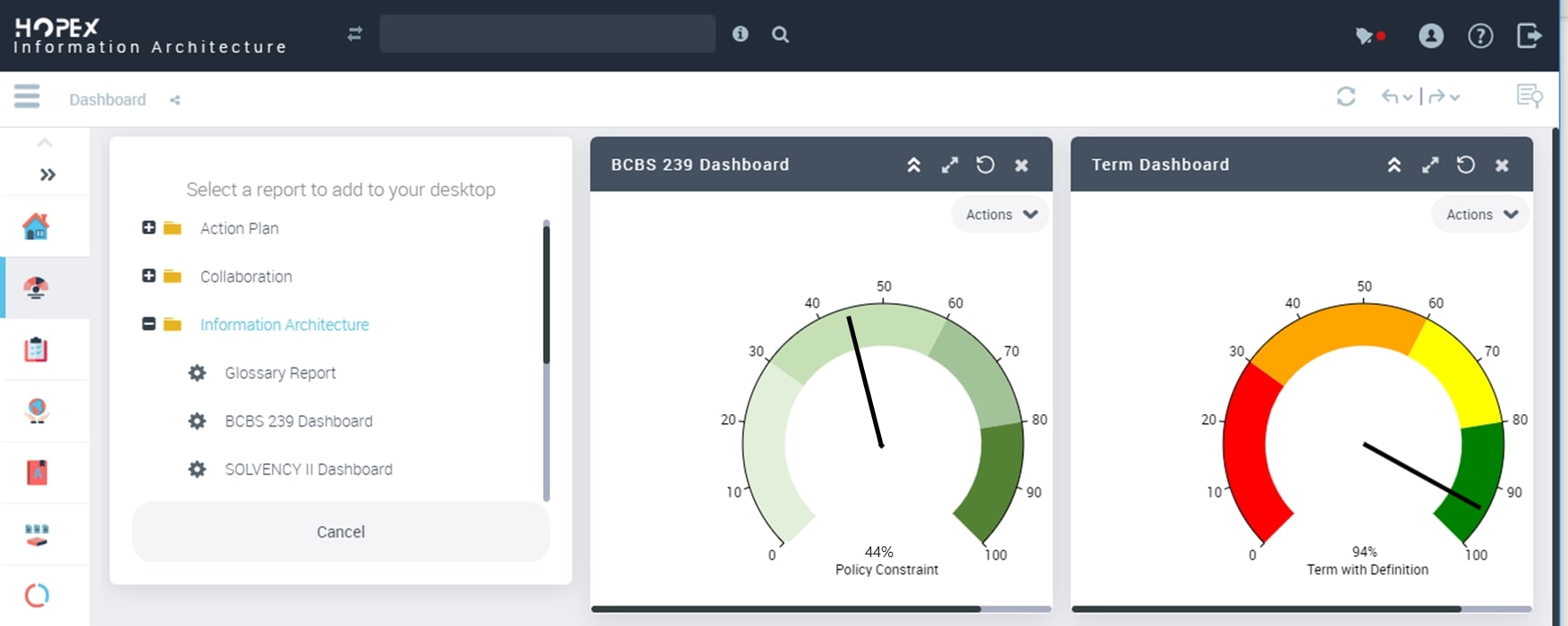
Monitor the level of data constrained by regulatory requirements and the percentage of terms with a definition
If we need to summarize HOPEX Information Architecture with a single sentence, information systems managers can ensure the correct use of information, minimize deviations at the level of execution, adapt to a layered approach to business asset science, associate information with corporate view and concept, and data models, assets. is the product that provides the tools they need to get awareness reports that show links between attributes and databases.

